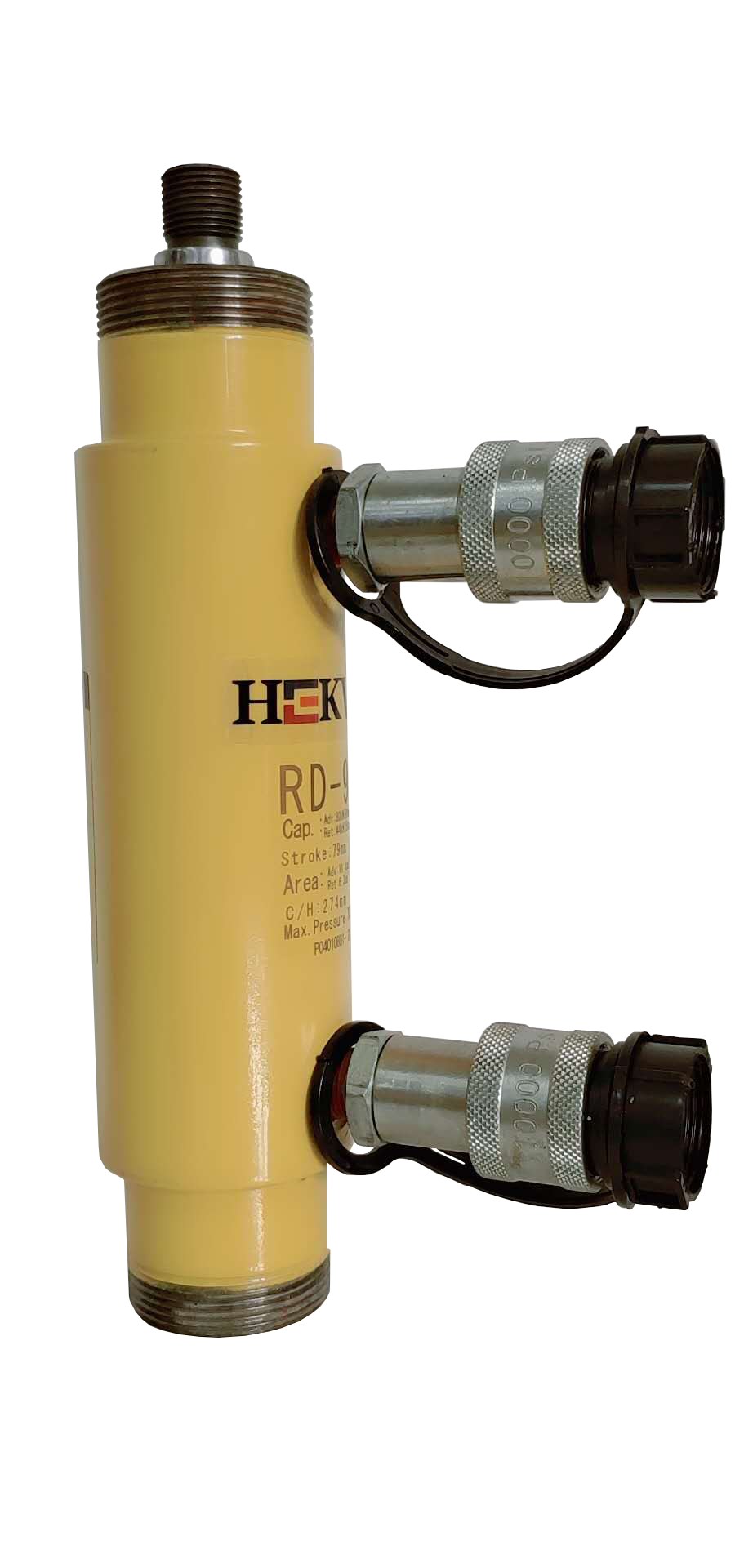Working Principle of Hydraulic Jack

The working principle of hydraulic jack is that the wrench moves upward to drive the small piston upward. The oil in the tank is sucked into the lower part of the small piston through the tubing and one-way valve. When the wrench presses down, the small piston is driven downward. The oil in the lower part of the tank and the small piston is blocked by the one-way valve. The oil in the lower part of the small piston is pressed into the lower part of the big piston through the internal oil path and the one-way valve. Because of the lever, the lower part of the small piston The force increases tens of times and the area of large piston is tens of that of small piston. The oil pressure produced by hand is squeezed into large piston. According to Pascal's principle, the area ratio of big piston to small piston is the same as that of pressure.
In this way, the force on the hand increases ten times (15 times) from the wrench to the small piston, ten times (15 times) from the small piston to the big piston, and 15 times (15 times) from the big piston (the moving part stretching out when lifting the car) to 15X15 = 225 times. If you use every 20 kilograms of force on the hand, you can produce 20X225 = 4500 kilograms (4.5 tons).
This is the working principle of hydraulic jack.
When used up, a normally closed valve opens manually, and the oil is squeezed back into the tank by the weight of the car.
Hydraulic jack structure is composed of shell, large piston, small piston, wrench, oil tank and other components.
